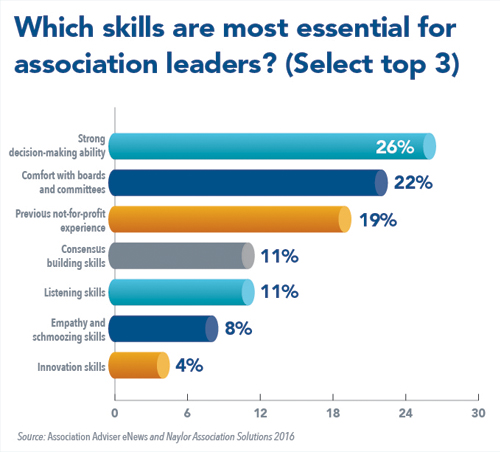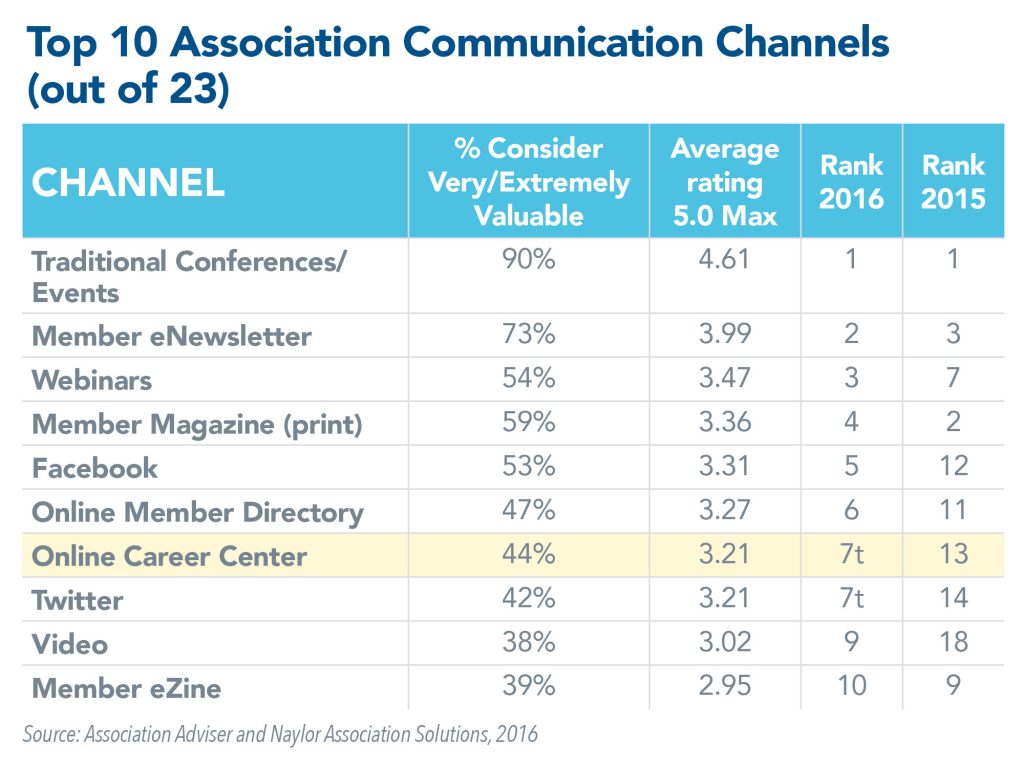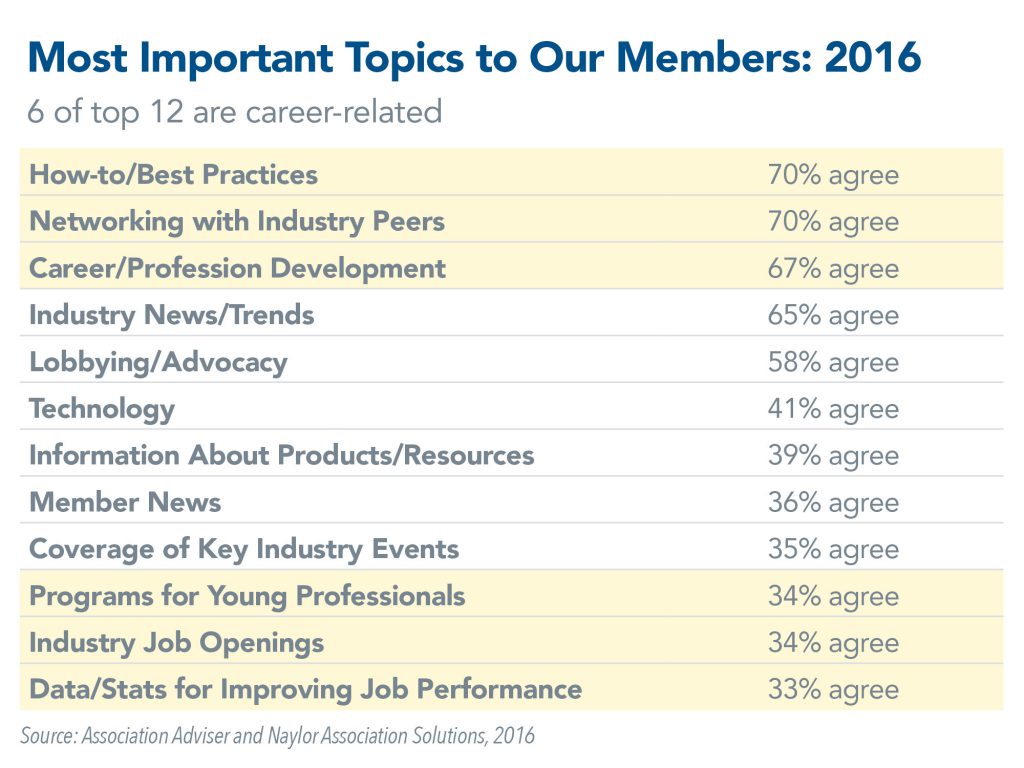You’re Never Too Old to Learn Something New

I spoke with CEO of AGC Georgia Michael Dunham the other day about association leadership, career development and mentoring (see his Corner Office profile). Since the vast majority of corporate, government and not-for-profit workers in the U.S. are “at will” employees (i.e., not under contract), I wondered if HR folks were worried about investing in employees who could fly the coop for a better offer on a moment’s notice. Dunham’s response? “The only thing worse than training your people and losing them is not training them and keeping them.”
That’s no laughing matter when you’re serving industries like large-scale construction, in which there are five times as many boomers “retiring out” as there are young people stepping in to take their place. While those kinds of demographics can be unsettling, our panel of experts offered concrete steps for attracting and retaining the kinds of talent you need to keep your association growing and relevant.
![]()
The only thing worse than training your people and losing them is not training them and keeping them. ![]()
A strong mentoring program is instrumental to attracting the NextGen and retaining long-timers. ![]()
New leaders should really learn the culture of their organizations before trying to implement changes. ![]()
If you’re a recent grad, experts say your education is just beginning. ![]()
Have a robust job board and online career center
Tom Aley, vice president, client management & analytics, Boxwood Career Solutions, said that job boards not only deliver professional advancement opportunities, they drive traffic to association websites. “Most associations think of a job board as a lot of extra work, especially for small staff organizations. But [job boards] have matured and now there are solutions that range from simple job boards (like the Boxwood GO product) to more complex career centers that offer state-of-the-art job board features, content management and search engine optimization,” Aley said.
Mind your metrics
Joe Rosensteel, Boxwood’s vice president, digital product development, said if nothing else, make sure you keep an eye on your job board’s pages, sessions, average session duration and new sessions. He said a good benchmark is at least two pages per session and an average session duration of at least two minutes. New sessions should represent at least 50 percent of the traffic, which most likely indicates your site is properly marketed and optimized for the major search engines.
Aley said you must also focus on job views and candidate registrations because they quantify your association’s engagement with a talent pool. “That’s what employers buy,” he said. “Without candidates, no job board will be successful.” Aley added that associations can drive high performance in these areas by not only ensuring their career center has premium placement, but also by including job posts in its other important member communication channels.
Quality over quantity
“The biggest complaint I have heard about the bigger boards (e.g., Monster.com) is the large number of unqualified candidates who apply for each position,” said Boxwood’s Rosensteel. By contrast, associations offer quality over quantity. “Employers know that when they post a job on an association job board, they are advertising directly to an audience that is already tuned into their specific industry,” Rosensteel added.
Aley observed that most visitors to association job boards are passive candidates. “They’ve gone to an association’s website looking for other services (continuing education, networking opportunities, etc.) and discovered the job board as an additional service.” Since associations attract professionals who are deeply committed to their careers, Aley said employers benefit because they’re engaging with a candidate pool that cares about its professional advancement. “These folks tend to make the best employees and ultimately go on to become leaders in their respective industries/fields,” Aley added.
A new era of association job titles
Whether you’re looking for talented to staff to join your association, or considering a move into the association world, mining the list emerging job titles on association job site can be a helpful indicator of where an association’s highest priorities are (or should be).
Personally, association leaders have told me about newly created titles such as “VP of member value,” “director of member experience” and “chief imagineering officer.” Aley said he has noticed titles such as “community manager,” “engagement specialist” and “LMS manager,” which is a byproduct of the online learning trend at many associations.
Leadership skills that may surprise you
Association Adviser’s latest reader poll found that skills like decisiveness, comfort with boards and previous NFP experience were what are readers looked for in association leaders—more so than listening skills, empathy, consensus building, etc., that gets mentioned so often in association conferences and workshops.

Aley said the data didn’t surprise him. “The world is changing faster than ever. Associations need leaders who can make a well-informed decision quickly so their organizations remain relevant.” He also said “culture fit” is increasingly important. “As non-profit organizations, associations don’t have a lot of leeway to make errors. Making the wrong hire, especially in a leadership position, is an expensive mistake that could take years from which to recover.”
Online career centers: a key communication channel
Naylor’s annual Association Communication Benchmarking Study showed that online career centers in 2016 ranked as the seventh-most valued communication channel (out of 24). That’s a big jump from thirteenth place just a year ago. What’s driving that spike?

Aley pointed to a dearth of experienced, qualified talent. “Most economists will tell you the retiring boomers are going to leave a gap in the workforce, some saying we’re on the verge of a 15-year labor shortage. Robust association career portals deliver a gateway to jobs, content and learning in the context of professional advancement. For employers, job boards provide access to qualified talent that they can’t access elsewhere.”
Career advancement top of mind with members
Our research also found that “career/professional development” is now the third-most important topic to members (out of 15 choices).

That may not seem surprising, but consider as recently as 2012, career/professional development was barely in the top 5. What’s driving that trend? Sharon Kneebone, membership director, Institute of Food Technologists, is not surprised. According to IFT’s recent member satisfaction survey, Kneebone said the top three reasons members joined IFT were career-related: (a) to advance their careers, (b) to build their professional networks and (c) to build on their professional knowledge.
Aley said innovation and legislation are the two main drivers of the career-content trend. “In nearly every profession and industry, the pace of advancement has accelerated exponentially over the last 10 years, and all signs point to a continuance of that trend. We all need to get more proactive about our careers to maintain our competitive edge.”
Policies and regulations impacting association career dynamics
Dawn Rose, past executive director, American Society for Healthcare Human Resources Administration, said ASHHRA is focusing on diversifying membership beyond the mid-level to upper-level HR executive and expanding training into more non-hospital healthcare settings.
She agreed that new policies are requiring many organizations to change the way they do business. “Healthcare is a prime example. The Affordable Care Act has had monumental implications on the way hospitals and health systems deliver care,” Rose said. “Job consolidation, implementation of new roles and emergence new standards result in people wanting more help navigating their career paths. Associations are a logical place to look for career and professional resources.”
Importance of tech training for all age members
Rita Chen Fujisawa, vice president and VOO, California Association of Health Facilities, said CAHF members tend to be late adopters of technology. Her organization is trying to get more comfortable them online. “Right now with social media we’re out there on Facebook, LinkedIn and Twitter,” she said. “However, it’s not enough just to be out there on those platforms. It needs to be an integrated strategy.”
ASHHRA is expanding its certification programs and leveraging technology to help members “learn, connect and build their own careers,” Rose said.
In our Corner Office profile, Michael Dunham describes AGC Georgia’s training programs as helping contractors up their game when it comes to online project delivery systems, 3D animation and the responsible use of drones. It’s also about tailoring continuing education programs for each member’s preferred way of learning. “A 62-year-old plant superintendent still wants to come to a live class for 10 hours to get his OSHA training. He’ll tell me, “I’m not going to watch 10 hours on a video screen. On the other hand, Dunham said a millennial will tell him, “I don’t have time to sit in a 10-hour class, I’m going to watch this thing every night for an hour on video until I knock it out.”
Mentoring as a competitive advantage
Jenny Matthews, executive director, Tennessee Society of Association Executives, observed that boomers often joined associations because they felt it was the right thing to do and an honorable way to stay involved in their industry or profession. By contrast, Matthews said it’s more value-based and transactional for the younger generation that always wants to know, “What am I getting for my dollar? Show me that benefit.”
While job boards, professional training and certifications have long been staples of attracting and retaining members, associations are realizing that formalized mentoring programs can provide them with a significant competitive advantage. As we explain in our new piece, Can Mentoring Programs Bring Younger Members to Your Association?, more than 94 percent of respondents to a Horizons survey of 4,000 business leaders, consultants and association leaders believed that associations should adopt mentoring programs in order to attract younger people.
Dunham said he was “blessed” to have so many veteran members and AGC chapter leaders mentor him throughout his career. He credited AGC’s formal and informal “ride together in the pickup truck” culture that makes so many members want to share their knowledge with others and “pay it forward.”
“When I speak to university students about construction and architecture, I let them know that just because they’re graduating from school and getting their first job, their learning is just getting started,” chuckled Dunham. “Folks who’ve been out there and doing it for a while have so much to share about how things work. That opportunity to share best practices is a lot of what we do in our educational training programs.”
Conclusion
To that end, psychologist and author Angela Duckworth had a great column in The New York Times this month about career advice for recent graduates that folks of any age should follow: “Foster your passion” rather than simply “follow your passion,” she advised. Why? Because it takes time to develop a direction that feels “so in-the-bones right” that you never want to veer from it. That’s a feeling that associations have been providing to all-age members for over a century.
Hank Berkowitz is the moderator-in-chief of Association Adviser eNews.

